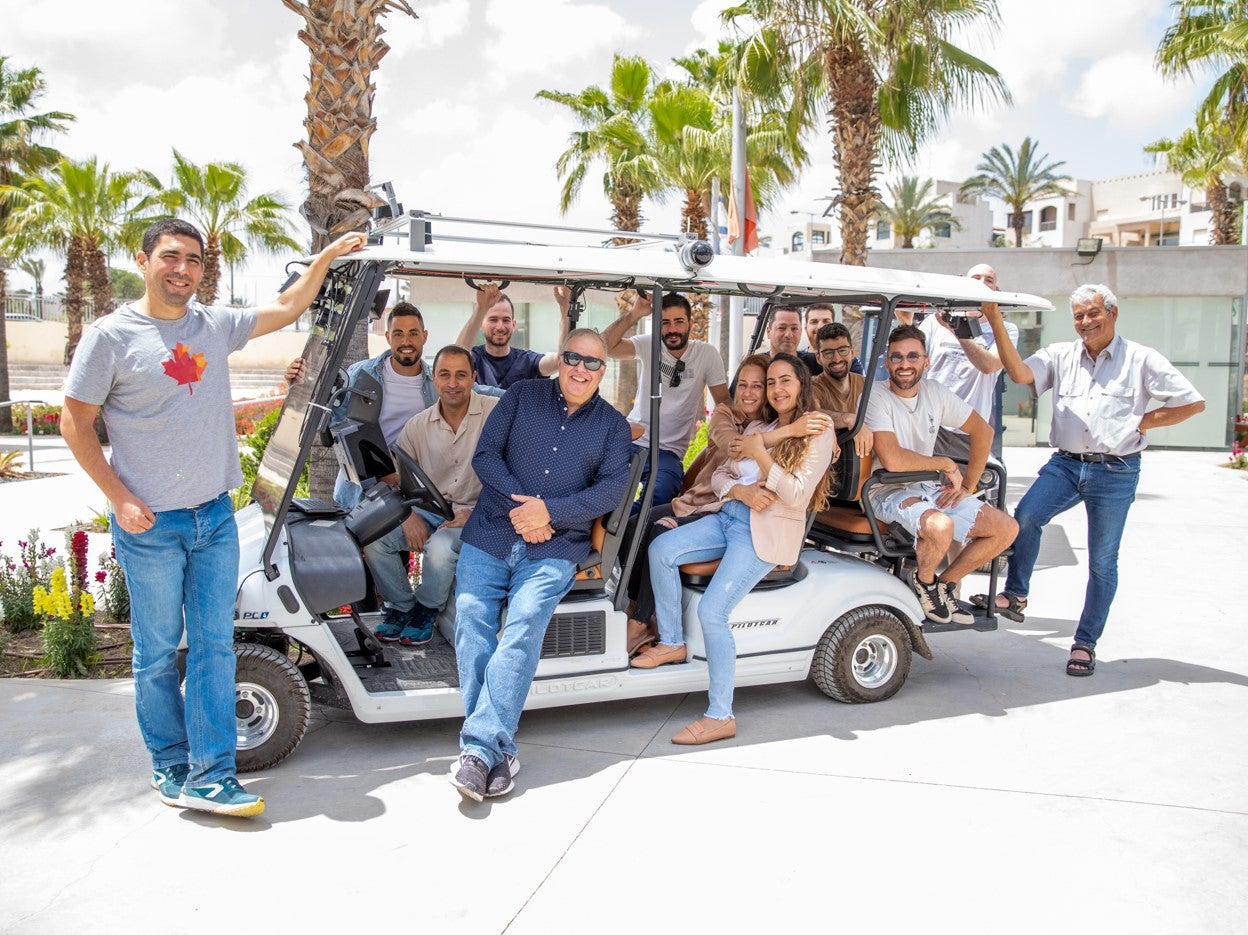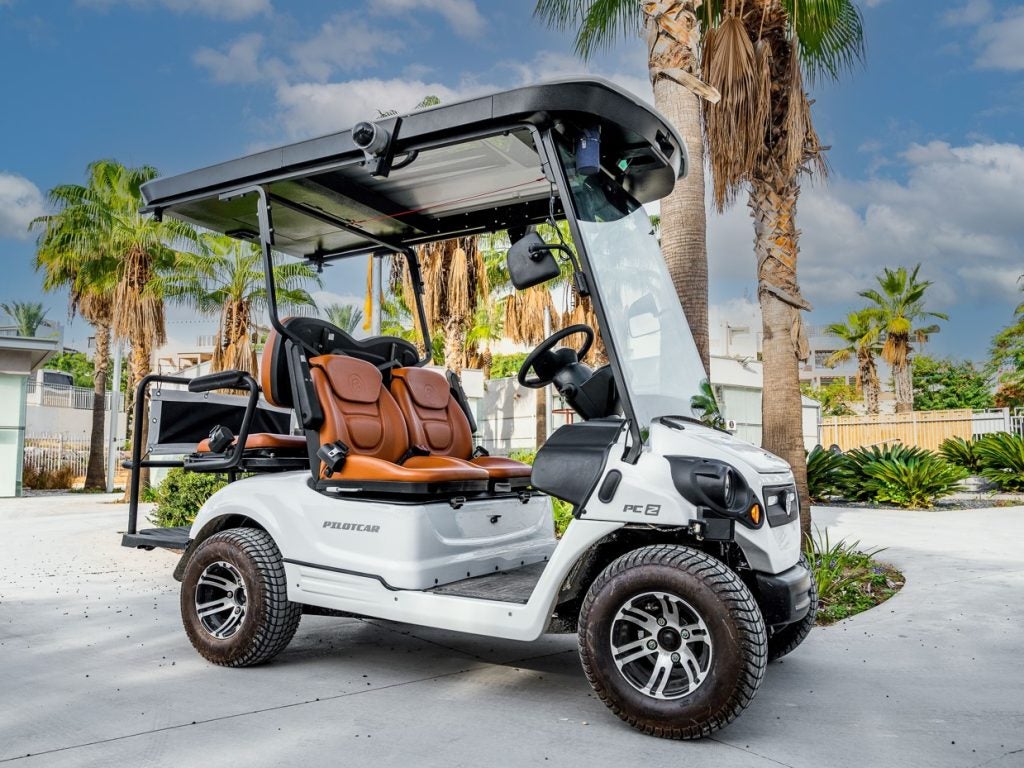
Autonomous vehicles (AVs) are a key topic of discussion within the auto industry. However, at high speeds, these vehicles could potentially raise significant safety concerns. There is, however, a different way of looking at autonomous drive applications and that is to consider use-cases where high-speed or quick journey time is not so critical to performance needs and can be taken out.
Start-up company Carteav is specialising in low-speed autonomous vehicles. The company is bringing these self-driving vehicles to industries such as hospitality, community, industrial campuses and airport mobility.
The key goal of the company is to reduce on-site transportation costs while providing an ‘extraordinary riding experience’. The positives of using an autonomous low-speed vehicle include reduced driver cost and improved safety.
We spoke to Avinoam Barak, CEO of Carteav to learn more about these vehicles, their applications and their benefits.

Just Auto (JA): Could you discuss the background of the company?
Avinoam Barak (AB): We started the company three years ago. It was brought up through a discussion of the potential obstacles to autonomous cars: Let’s consider the issues in the way, why they may not happen. Further, let’s identify the weak points or obstacles and look to bypass or resolve those things.
How well do you really know your competitors?
Access the most comprehensive Company Profiles on the market, powered by GlobalData. Save hours of research. Gain competitive edge.

Thank you!
Your download email will arrive shortly
Not ready to buy yet? Download a free sample
We are confident about the unique quality of our Company Profiles. However, we want you to make the most beneficial decision for your business, so we offer a free sample that you can download by submitting the below form
By GlobalDataWe found that the main theoretical obstacle to autonomous cars is going to be speed because at a high speed they require very sophisticated sensors. At high speeds you need to look a long distance in front of the vehicle. And also, when AVs come, there will still be large numbers of vehicles on the road that are non-autonomous.
We found that the main theoretical obstacle to autonomous cars is going to be speed because at a high speed they require very sophisticated sensors.
There is also a huge mapping issue that goes with safe operation of AVs at speed.
We said: How can we bypass those kinds of problems?
If you are going to drive at a lower speed, lower speed means higher safety. It also means you can use more off-the-shelf sensors – which are cheaper- and not the highly sophisticated ones. When you drive at say 10 kilometres an hour, then you need a sensor that can see for 30 or 40 metres and not for 200 metres.
All of that brought us to the idea to bring a solution which is the low-speed autonomous vehicle.
Could you explain the technology which is being provided to the vehicles?
First of all, when you are looking at different applications – a campus or industrial site, say – we are making the solution for that application. We are also defining a behavioural system for the autonomous car.
We are setting the rules for the AV. We are also mapping the operating area for each location and in that area we are defining safety instructions. Part of the safety is not based on what the car is seeing in real time, it’s also based on the instruction it gets from the map which is based on its location.
We are mapping the garbage collection, the garbage bins, we are mapping all the static obstacles, so we know what is static and what is dynamic. If we see a bicycle, we scan it in 3D and we know immediately that it’s a dynamic element and it’s not a static element, because we are mapping all the static elements in there.
Since we are driving slowly, we have a significant difference from a normal car in the way that people react to the vehicle. At normal speeds after you have stopped, people may walk across the vehicle and then you can continue to drive. However, since we are driving 10 kilometres per hour, we need to keep checking, not everyone that will be nearby will actually stop or be as wary of slow moving vehicles.
Our low-speed AV may be operating in an open area, with no obvious lanes to manage traffic flows – so we are, in effect, creating endless lanes online as the vehicle progresses. If the pedestrian is on the right side, you would go to the left side, if the pedestrian is on the left side, you would go to the right side. We need to create alternative routes all the time.
Also, our car may have a speaker and have the useful ability to speak to pedestrians in the immediate vicinity. For example the car can say: “We are now going to turn right, please move aside, you are blocking the way.” We are talking because we are driving slowly and people can listen. When you drive 50 kilometres per hour nobody can hear you and there is no time for such an interaction.
Think about how much communication you have today when you’re walking alongside drivers on the road at an intersection or pedestrian crossing. You look at their eyes before you cross the road, you trust their behaviour. What will happen if a car would stop near a crossing and no one is inside the car, what would you do? It could be cause for concern, but imagine if the car could tell you that it will stop and wait. This communication aspect between people and cars is critical.
Where are some of the areas where the vehicles can be used?
We asked ourselves, what are the current markets that we can bring a solution to and what is the future market? The current market was quite clear to us because we found out that there is a golf club market that is low-speed, and also managed areas – resorts, hospitals, airports, retirement villages, industrial areas and so on.
In the future, we are also talking about urban centres. There is an area in the centre in smart cities that they call ‘the car-free zone’. It’s still big. Young people can use scooters or cycles, but very young people, older parents, and elderly people will need some transportation. So, we can play a role for transportation within such a defined area.
What are some of the benefits this technology provides?
When considering a closed area, you’ll maybe want to manage a service from point A to point B. In many cases that is not even a viable service, because the cost of the driver is so high. In hospitals, in retirement villages, there is perhaps no service. So, first of all, we can give our service to places that do not have one.
At the places such as resorts, universities and so on, we can provide the service cheaper because we have no driver. The enhanced safety factor means fewer accidents – and accidents cost money. In comparable driver vehicles these accidents happen a lot at higher speeds where people fall out of the vehicles which have no doors.
Normally if they are providing a service, they’re doing something like a shuttle, we are giving a service point to point – you can go wherever you want.
The number one complaint in resorts for example, is that when you need to order a car, you go to reception and you ask for one, sometimes you will wait 20 minutes, half an hour, you don’t know when the car is coming. You don’t know when it will pick you up, and you don’t know if you should stay in the room or to go down to it, no one can communicate to you. There is no estimated time of arrival, we can provide that.

What are your predictions for growth when looking at low speed autonomous vehicles?
I don’t see this as the main transportation, but I see it a complementary transportation. It will start with the most immediate environments, like hotels, campuses and so on, closed environments. Then they will be going to city centres for car-free zones. They could be used later on as a solution for park and ride; you can park your car and then your last mile in the city will be with this solution.
I don’t see this as the main transportation, but I see it a complementary transportation.
When adopted, I believe it will be very easy to adopt, because there are no people involved. We don’t have any real operational costs. We believe it will be embraced quite quickly – not only by hospitals, but airports also. They can take disabled, elderly, young people – and the distance within the airports is huge today!
We also see a trend of people building neighbourhoods and closing it with a fence for a gated community. People are perhaps parking outside the perimeter, but they still want to have an internal transportation solution for the kids, luggage, to move their shopping to their home and so on.







